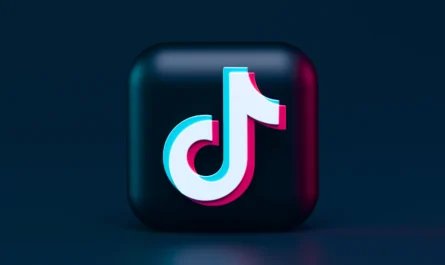By Mary Osborne
Everyone wants to have a Twitter account that features original content, engages followers, and gives their brand a distinct voice. But how do you actually achieve all that?
After hours spent on Twitter (strictly for research purposes, of course) I’ve identified three elements that contribute to having a dynamic Twitter presence and creating engaging content. Below are those three elements along with examples of accounts that exemplify those concepts. (I’ve chosen all soccer-related accounts because those make up 99.99 percent of my feed.)
Emoji Fluency –SPORF (@sporf)
How can an account make content that catches readers’ attention while also getting their message across in a creative way? Emojis!

Emojis are a great way to get across information in a way that also makes the post more appealing to the eye. SPORF, a UK-based sports social media brand, is the champion of using emojis in its tweets.
SPORF often tweets statistics, lists, or breaks down information in other ways. The account does a brilliant job at using emojis to make this content more readable and eye-catching.
SPORF breaks up chunks of text by using emojis almost as bullet points. The emojis are also sometimes used to convey additional information that’s not written explicitly in the post like a player’s country of origin or how many of a certain award they’ve won. Imagine these posts but sans-emoji; it wouldn’t be nearing as easy-to-read, right?

Humor –Manchester City (@ManCity)
Humor seems like an obvious element in the Twitter equation, but it’s worth stating again. Not every brand uses humor on its social media platform, but if you’ve decided being funny aligns with your brand voice, then do it! In this case I’ve chosen the Manchester City account as an example; if you’re a football club you shouldn’t try to be funny in every single tweet — but the occasional humorous post can bring some personality to your brand.
Creating humorous content can also help expose your account to new audiences. A few days ago this tweet came into my feed about Manchester City’s flag post that was broken during a game. I don’t follow Manchester City or any of their players on Twitter so this only came up on my feed because someone else outside of that circle liked it.

Looking through the comments of one of the Flaggy posts, I saw lots of messages from fans of different teams wishing Flaggy a quick recovery. Because these tweets were funny they were shared around the greater Twitter football community, not just the Manchester City fan base.

Encouraging engagement –Chelsea FC (@ChelseaFC)
Pretty much everyone on Twitter (me included) wants their followers to engage more with their content; success of social media campaigns are measured in impressions, likes, and retweets.
One very obvious way to get more engagement with your posts is simply to ask for it.

By creating polls and asking questions of your followers you can get more engagement naturally. However, this tactic should be used sparingly. Followers won’t reply to your questions if that’s the only thing you ever post.
Here are two great examples of how Chelsea encourages simple follower engagement through their tweets. A poll deciding Man of the Match is an effective way of getting engagement because followers are able to have their voices heard for something that has real a real effect. As far as asking where people are watching the game, that’s a great example of a broad question almost all of your followers could answer.

By mixing these three strategies into your Twitter content you’ll be able to engage followers and build up your brand’s online personality!
Find me Twitter: https://twitter.com/maryosbornee LinkedIn: https://www.linkedin.com/in/maryosborne1996/




Mary, I really like this post! This topic was very interesting to talk and learn about this week because I am way more of a liker and reposter on Twitter rather than posting my own tweets. I guess a point you made is that I really don’t have any sort of “brand”. But it is interesting to see what grasps people’s attention more, I know I love humor in tweets for sure. I will have to keep these points in mind and start posting more of my own content!
Hi Mary,
Great post! Being someone who is relatively unfamiliar with Twitter best practices (or Twitter in general), the opening sentence/question totally got my attention because I am totally one of those people. I really liked how you mentioned emojis as a tactic because I had never thought of using emojis as a strategy or with a specific purpose before. I think that really helps for people who engage better with visuals than written messages.
Thanks for providing lots of examples of current accounts! That was super helpful because I am certainly one of those visual learners.
Hi Mary,
This is a great post! I usually use Twitter as a way to get entertainment and I don’t post many of my own tweets but as I move into the professional world I have started tweeting more as a way to make connections with professionals. Because of that, I’m always looking for new and creative ways to make my content stand out and these are helpful tips. Thanks for sharing!
Hi Mary,
I enjoyed reading your post. I would agree with you regarding the use of emojis and humor to help make tweets standout. As long as emojis and humor aligns with the brand’s messaging, it will help create positive emotions among its audience. I feel that encouraging engagement is one of the primary goals regarding a brand’s social media. The difficult part is just finding out how to effectively create new content that will encourage engagement on a consistent basis.
Hi Mary!
I loved your usage of Premier League teams. I am a Manchester United fan so seeing Manchester City was kind of hard for me (haha!). I think emojis can be helpful when used correctly. I agree that it can increase engagement with fans and also seem like a break from too much text. Especially when used appropriately, emojis can be helpful when trying to convey humor, inspiration, love, or any other kind of feeling.
However, I also argue that emojis can be distracting if used too much. Captions, when appropriate, should be short and sweet for a reader to digest. Sometimes, if I see too many emojis on a post, I scroll past it. I believe a strong caption should not warrant any type of emoji, only if it augments the statement.
Mary, great post. I love how you used soccer accounts to incorporate your own career goals with your Twitter fluency. I think humor is important to emphasize for a lot of reasons. First, everyone loves humor, but as a brand, you are responsible for making sure your humor is not cruel or offensive. Thinking of humorous content for Twitter and other social platforms requires the perfect combination of referencing relevant trends and using humor that is appropriate for all ages. It truly is a balancing act and of course the voice you use will differ brand to brand.
Hi Mary, I really enjoyed reading your thoughts on Twitter engagement! I think you did a very nice job researching your topic as well as finding valid points. Your points of using emoji’s, humor and encouraging engagement really do help make accounts stand out. I also think the account user’s personality and sense of humor is factor when looking to make tweets stand out more. Overall, there are many different factors that could be considered when attempting to make tweets stand out!
Mary – I loved your insights! I am going to try to use these on my own Twitter! It’s interesting to see how and why certain tweets stand out more than others. And how different the accounts can be on their Twitter strategy. It would make sense for some organizations to use a more serious approach to Twitter and their tweets but some take a humorous route. The soccer examples remind me of the NHL’s Twitter account and how they try to take a funny and personable approach.
Hi Mary,
Your post is great, I really enjoyed reading it. I agree with you on the use of emojis and humor helps make tweets outstanding. They are like flammable agents. They may help audience be interested ordinary content. For good content, they can make the audience get that point even more. I think that humor makes life interesting, so keeping humor is a good way to keep tweets outstanding. However, they should never be used too much, because they would make audience feel informal and casual.
Hi Mary,
Nice post. I agree that humor can be a very effective tool to increase engagement among a brand’s followers, so long as the humor is not crude/ offensive and is in-line with the brands values. I also agree that polls should be used sparingly. I believe that they can be a very effective tool at increasing engagement on Twitter and for obtaining data or marketing research.
As a really recently new (actually old, but repeatedly new) user of Twitter (like, when this class started) after several years of trying to figure out why I cared about Twitter, I value this post. For a long time, I just didn’t “get” it… a bunch of random conversations with symbols and people I didn’t know. But since I’ve started this class and engaged in the live blogging, I understand a lot of the fun and value far better.
Primarily I think of Twitter being centered around brands, both personal and corporate. The conversations that those brands curate really determine the quality of the engagement. As Kelli says, “Content is King”. Humor wins, for sure. I feel a little different about emojis, especially if they are overused (I haven’t needed a picture for every word since I learned to read, or unless I’m three sheets to the wind at Denny’s at 2 AM) or the context is unclear. Then, it’s a distraction for me. I’m also curious to see if when the emoji coding changes (ie the picture changes for the same underlying code), if the emoji changes. The gun to squirt gun is a good example. Also I think that emojis can be completely different things (a waving hand v. a pig) because of differences between different systems. Something to look into for sure.
I really think encouraging engagement and conversation like you said is one of the biggest things on Twitter too. The platform was built just for that and everything else feeds off original conversations. People and fans like to feel like they are a part of the conversation/the action online.
Mary,
I think humor is a great way to engage with people through social media. I do understand how some companies should not use humor but in my opinion most companies should use at least a little bit of humor in their social media. I do love your other tips on how to boost engagement. Really thoughtful post.
This is such a useful take on enhancing one’s presence on Twitter. I am new to having a Twitter and it’s weird for me. Truthfully, I could not care less about growing my number of followers, but I liked your spin and suggestions. I recently listened to a Ted Talk about using emoji… I know, I know… I call them emojis too! But this expert calls them “emoji”. Fascinating. The speaker’s name is Alisa Freedman is a Professor of Japanese Literature, Cultural Studies, and Gender at the University of Oregon and Editor-in-Chief of the U.S.–Japan Women’s Journal. She mentioned that so much of what we assume to be true about emoji is false! The word emoji for instance is not short for emotion, but is a Japanese words, because emoji are Japanese. She talked about emoji that Americans generally think mean one thing but in Japanese culture mean something completely different. Take for example the hands together emoji. People often think that means praying, but it actually means thank you in Japanese culture and emoji intent. So interesting! If I plan on growing my Twitter presence, I will definitely consider spicing it up with use of emoji.
I really enjoyed this post and think you made some great points. My favorite tactic that you pointed out is using humor to engage followers, I think a lot more businesses can employ humor than they think. One account that has done this well is Twitter itself. Twitter changed its brand voice from business focused to humorous and the change has proven successful. I also definitely agree that encouraging engagement can be a very effective tactic when used sparingly and strategically. Twitter polls specifically are a great tool because they are both visual and encourage participation.
Hi Mary, I really enjoyed this post! I’m not an avid Twitter user so hearing these different strategies makes me wish that I was! I really liked how you used examples from soccer accounts to help show how these strategies can and are being used in this industry. Thanks for sharing, I will definitely keep these in mind next time I get on my Twitter!